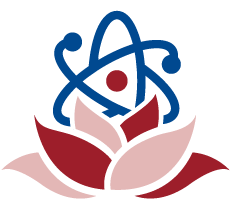| Blu-ray DVD player ཟེར་སྔོན་བརྙན་སྡེར་སྟོན་ཆས། | phys. A stand-alone electronic device capable of reading a Blu-ray disc and decoding the recorded data to produce an audiovisual stream that can be played back on a video monitor. | ཟེར་སྔོན་བརྙན་སྡེར་ཞིག་ཀློག་ཐུབ་ཅིང་དེའི་སྟེང་དུ་བཀོད་པའི་ཆ་འཕྲིན་གྱི་བརྡ་བཀྲོལ་ཏེ་བརྙན་ཡོལ་ངོས་སུ་འཆར་ཐུབ་པའི་སྒྲ་དང་བརྙན་སྐྲུན་པར་བྱེད་མཁན་གྱི་རང་སྐྱ་འཕེལ་བའི་གློག་ཆས་ཤིག |
| Blu-ray DVD ཟེར་སྔོན་བརྙན་སྡེར། | phys. An optical disk used to store digital information such as high-definition video, and able to store more information than a standard DVD. (blu, a respelling of blue, from the colour of the laser used to read and write this type of DVD) | ཚགས་དམ་གློག་བརྙན་ལྟ་བུའི་གྲངས་འབྲེལ་ཆ་འཕྲིན་གསོག་ཉར་བྱེད་པར་སྤྱོད་པའི་འོད་སྡེར་ཞིག་ལ་གོ་ཞིང་། ཚད་ལྡན་བརྙན་སྡེར་གཞན་ལས་ཆ་འཕྲིན་མང་བ་གསོག་ཉར་བྱེད་ཐུབ། (སྔོན་པོའི་དག་ཆ་གཞན་ཞིག་ནས་བཏོན་ཞིང་། བརྙན་སྡེར་འདིའི་རིགས་ཀྱི་སྟེང་དུ་ཆ་འཕྲིན་འབྲི་བ་དང་འདི་ལས་ཆ་འཕྲིན་ཀློག་པའི་ཆེད་དུ་ལེ་ཟེར་སྔོན་པོ་སྤྱོད་པས་མིང་འདི་ལྟར་བཏགས།) |
| Bloom’s taxonomy བྷུ་ལུམ་གྱི་དབྱེ་བསྡུ་རྣམ་གཞག | Pedagog. | |
| blood-brain-barrier ཁྲག་ཀླད་དབྱེ་མཚམས། | biol. A network of blood vessels and tissue that is made up of closely spaced cells and helps keep harmful substances from reaching the brain. The blood-brain barrier lets some substances, such as water, oxygen, carbon dioxide, and general anesthetics, pass into the brain. It also keeps out bacteria and other substances, such as many anticancer drugs. | ཚགས་དམ་པོའི་ཕྲ་ཕུང་གིས་གྲུབ་པའི་ཁྲག་རྩ་དང་ཕུང་གྲུབ་ཀྱི་དྲ་ཚོགས་ཤིག་ལ་ཟེར་ཞིང་། འདི་ཡིས་གནོད་འཚེ་ཅན་གྱི་བེམ་རྫས་བཀག་འགོག་བྱས་ཏེ་ཀླད་པར་འབྱོར་དུ་མི་འཇུག་པར་ཕན་གྱི་ཡོད། ཁྲག་ཀླད་དབྱེ་མཚམས་ཀྱིས་ཆུ་དང་། འཚོ་རླུང། ཁར་བོན་འཚོ་རླུང་ཟུང་ལྡན། རྒྱུན་ལྡན་སྦྲིད་སྨན་ལྟ་བུའི་བེམ་རྫས་འགའ་ཞིག་ཀླད་པའི་ནང་ལ་འཛུལ་དུ་འཇུག ཁྲག་ཀླད་དབྱེ་མཚམས་ཀྱིས་སྲིན་བུ་དང་སྐྲན་འགོག་སྨན་རྫས་སྣ་ཚོགས་པ་ལྟ་བུའི་བེམ་རྫས་གཞན་རྣམས་ཀྱང་འགོག་གི་ཡོད། |
| blood vessel ཁྲག་རྩ། | biol. | |
| blood type ཁྲག་རིགས། | biol. One of the classes (such as those designated A, B, AB, or O) into which individuals or their blood can be separated on the basis of the presence or absence of specific antigens in the blood | ཁྲག་གི་ནང་དུ་འགོག་ཟུངས་སྐྱེད་རྫས་ངེས་ཅན་ཞིག་ཡོད་མེད་གཞིར་བཞག་སྟེ་མིའམ་མིའི་ཁྲག་གི་སྡེ་ཚན་མི་འདྲ་བར་དབྱེ་བའི་སྡེ་ཚན་ (A, B, AB, O ཞེས་མིང་བཏགས་ཡོད་པ་ལྟ་བུ་) གང་ཡང་རུང་བ་ཞིག་ལ་གོ |
| blood transfusion ཁྲག་གསབ། | biol. A process in which blood that has been taken from one person is put into another person's body, especially after an accident or during an operation. | གཤག་བཅོས་ཀྱི་གནས་སྐབས་སམ་བརྡབ་སྐྱོན་བྱུང་བའི་རྗེས་སུ་གང་ཟག་ཅིག་གི་ལུས་པོ་ནས་བླངས་པའི་ཁྲག་དེ་གང་ཟག་གཞན་ཞིག་གི་ལུས་པོའི་ནང་དུ་ལྡུག་པའི་རྒྱུད་རིམ་ཞིག་ལ་ཟེར། |
| blood stream ཁྲག་རྒྱུན། | biol. The flow of blood through the circulatory system of an organism. | སྐྱེ་དངོས་ཤིག་གི་འཁོར་སྐྱོད་མ་ལག་ནང་གི་ཁྲག་གི་རྒྱུ་བ་ལ་གོ |
| blood stem cells མ་རྐང་ཁྲག་ཕུང། | biol. An immature cell that can develop into all types of blood cells, including white blood cells, red blood cells, and platelets. Blood stem cells are found in the peripheral blood and the bone marrow. | ཁྲག་དཀར་ཕྲ་ཕུང་དང་། ཁྲག་དམར་ཕྲ་ཕུང་། ཁྲག་ཞིབ་བཅས་སུ་འཚར་འཕེལ་བྱེད་ཐུབ་པའི་ནར་མ་སོན་པའི་ཕྲ་ཕུང་ཞིག་ལ་གོ་ཞིང་། མཐའ་གནས་ཀྱི་ཁྲག་དང་རྐང་མར་གྱི་ནང་དུ་ཡོད། |
| blood serum ཁྲག་གི་ཆུ་སེར། | biol. The clear yellowish fluid that remains from blood plasma after clotting factors (as fibrinogen and prothrombin) have been removed by clot formation. | ཁྲག་ལིང་ཆགས་པ་ལ་བརྟེན་ནས་ཁྲག་ལིང་ཆགས་པའི་རྐྱེན་རྣམས་ (ཁྲག་ཚི་གྲུབ་རྫས་དང་ཁྲག་ལིང་སྨིན་རྫས་སྐྱེད་བྱེད་ལྟ་བུ་) ཕྱིར་བཏོན་པའི་རྗེས་སུ་ཁྲག་འདུར་དུ་ལྷག་པའི་དྭངས་གསལ་གྱི་གཤེར་ཁུ་སེར་པོ་དེར་ཟེར། |
| blood sampling ཁྲག་དཔེ་བསྡུ་ལེན། | biol. | |
| blood sample ཁྲག་དཔེ། | biol. | |
| blood pressure ཁྲག་ཤེད། | biol. The pressure exerted by the blood against the walls of the blood vessels, especially the arteries. It varies with the strength of the heartbeat, the elasticity of the arterial walls, the volume and viscosity of the blood, and a person's health, age, and physical condition. | ཁྲག་རྩའི་ཕྱི་ཤུན་སྤྱི་དང། བྱེ་བྲག་ཏུ་འཕར་རྩའི་ཕྱི་ཤུན་ལ་ཁྲག་གིས་སྐྱེད་པའི་གནོན་ཤུགས་དེ་ལ་གོ་ཞིང་། འདི་ནི་སྙིང་གི་འཕར་ལྡིང་གི་ཤུགས་ཚད་དང། འཕར་རྩའི་ཕྱི་ཤུན་གྱི་ལྡེམ་གཤིས། ཁྲག་གི་ཚི་ཤུགས་དང་འབོར་ཚད། མི་སོ་སོའི་འཕྲོད་བསྟེན་དང་ལོ་ཚོད། ལུས་པོའི་གནས་སྟངས་བཅས་ལ་བསྟུན་ནས་སྣ་ཚོགས་པ་འབྱུང་། |
| blood oxygenation level-dependent (BOLD) signal ཁྲག་ནང་འཚོ་རླུང་ཚད་གཞིར་ལྟོས་པའི་བརྡ་འཕྲིན། | neurosci. Blood-oxygen-level-dependent (BOLD) signal is the magnetic resonance imaging (MRI) contrast of blood deoxyhemoglobin. | ཁྲག་ནང་འཚོ་རླུང་ཚད་གཞིར་ལྟོས་པའི་བརྡ་འཕྲིན་ནི་ཁྲག་གི་འཚོ་རླུང་མེད་པའི་ཁྲག་དམར་སྤྲི་རྫས་ཀྱི་ཁྱད་པར་མཚོན་པའི་སྡུད་དཔར་ (MRI) ལ་གོ |
| blood oxygenation level dependent (BOLD) ཁྲག་གི་འཚོ་རླུང་ཚད་གཞིར་ལྟོས་པ། | neurosci. A functionalMRI technique that uses the differences in magnetic susceptibility between oxyhemoglobin and deoxyhemoglobin to image areas of activated cerebral cortex. | འཚོ་རླུང་ལྡན་པའི་ཁྲག་དམར་སྤྲི་རྫས་དང་འཚོ་རླུང་བྲལ་བའི་ཁྲག་དམར་སྤྲི་རྫས་གཉིས་ཀྱི་ཁབ་ལེན་གྱི་ཤུགས་རྐྱེན་ཞུགས་སླ་མིན་གྱི་ཁྱད་པར་བེད་སྤྱོད་བཏང་སྟེ་སད་སློང་ཐེབས་པའི་ཀླད་ཆེན་ཀླད་ཤུན་གྱི་ས་ཁུལ་དཔར་དུ་འདེབས་པའི་བྱེད་ལས་སྡུད་དཔར་གྱི་ཐབས་རྩལ་ཞིག |
